Turkmenistan Flag Meaning
A green field with a vertical red stripe containing five traditional carpet guls (patterns) on the hoist side, and a white crescent moon with five stars in the upper left, representing Islam, the traditional carpet weaving culture, neutrality, and the five regions and senses of Turkmenistan.
- Continent
- Asia
- Adopted
- 1992
- Ratio
- 2:3
- Colors
- green, red, white, yellow
- Designer
- Unknown
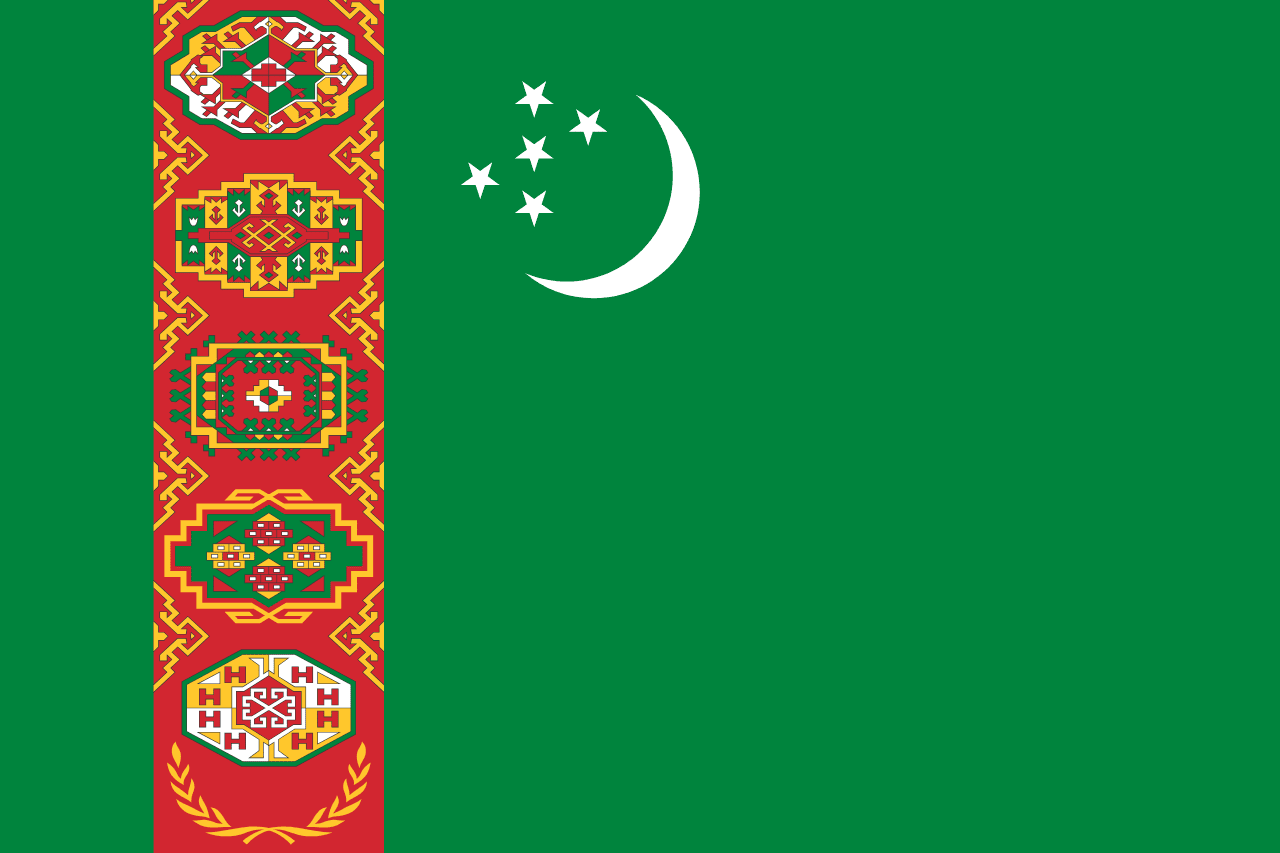
Symbolism
Green Field: Represents Islam, which is the dominant religion in Turkmenistan, as well as the hope for prosperity and the few oases that provide life in the largely desert landscape of the country.
Red Stripe with Carpet Guls: Represents the traditional carpet weaving heritage of the Turkmen people, with five distinct gul patterns representing the five major Turkmen tribes: Tekke, Yomut, Arsary, Chowdur, and Saryk.
White Crescent Moon: Represents Islam and the peaceful nature of the Turkmen people, symbolizing the bright future of the nation and the spiritual foundation that guides Turkmen society.
Five White Stars: Represent the five regions (welayats) of Turkmenistan and the five senses, symbolizing the administrative divisions of the country and the human connection to the world.
Carpet Pattern Border: The detailed border pattern at the bottom of the red stripe represents the intricate artistry of Turkmen carpet weaving, one of the most celebrated traditional crafts that defines Turkmen cultural identity.
History
- Ancient-Medieval Era: The region was inhabited by various peoples and served as a crucial part of the Silk Road, with cities like Merv becoming major trading centers and centers of Islamic learning and culture.
- 11th-13th Century: Turkmen tribes migrated into the region, gradually displacing or mixing with existing populations and establishing the nomadic pastoral culture that would define Turkmen identity for centuries.
- 16th-19th Century: Various Turkmen tribes lived semi-nomadic lives in the desert, maintaining independence while occasionally paying tribute to Persian or Uzbek rulers, developing the clan-based society and carpet weaving traditions.
- 1869-1885: Russian conquest brought the Turkmen lands under Tsarist control after fierce resistance, ending nomadic independence and beginning the integration into the Russian Empire's administrative system.
- 1920s-1991: Soviet rule brought modernization, education, and industrialization while suppressing traditional culture and religion, transforming Turkmenistan from nomadic society to Soviet socialist republic.
- October 27, 1991: Turkmenistan declared independence from the collapsing Soviet Union under Saparmurat Niyazov, who had been the Communist Party leader and transitioned to become the country's first president.
- February 19, 1992: The current flag was adopted, replacing Soviet symbols with traditional Turkmen designs and Islamic symbols, emphasizing the country's cultural heritage and religious identity.
- 1990-2006: Niyazov established one of the world's most extreme personality cults, renaming months after his family members, building golden statues of himself, and implementing bizarre cultural policies while declaring permanent neutrality.
- December 21, 2006: Niyazov died suddenly, leading to the succession of Gurbanguly Berdimuhamedow, who reversed some of his predecessor's most eccentric policies while maintaining authoritarian control.
- 2007-2022: Berdimuhamedow's rule brought gradual economic opening and infrastructure development using natural gas revenues, though political freedoms remained severely restricted and human rights abuses continued.
- 2022-Present: Serdar Berdimuhamedow, son of the former president, became president in what was effectively a dynastic succession, continuing authoritarian policies while facing economic challenges and international isolation.
Trivia
- Turkmenistan has the world's fourth-largest natural gas reserves, but most of the population remains poor due to authoritarian mismanagement and lack of economic diversification.
- The flag represents a country where the former president Saparmurat Niyazov renamed calendar months after his family members and built a golden statue of himself that rotated to always face the sun.
- Turkmenistan declared permanent neutrality and refuses to join military alliances, though this policy has led to diplomatic isolation and limited international engagement.
- The country is home to the 'Door to Hell,' a natural gas crater in the Karakum Desert that has been burning continuously since 1971, becoming an unlikely tourist attraction.
- Turkmen is the official language and belongs to the Turkic language family, though Russian is still widely understood due to the Soviet legacy.
- The flag flies over a country where traditional carpet weaving is considered a high art form, with Turkmen carpets being among the world's most prized and expensive rugs.
- Ashgabat, the capital, is known for having the highest concentration of white marble buildings in the world, built as part of massive reconstruction projects using oil and gas revenues.
- The country has one of the world's most restrictive media environments, with virtually no independent journalism and state control over all information sources.
- Traditional Turkmen culture revolves around the Akhal-Teke horse breed, considered one of the world's most beautiful horses and a symbol of national pride featured on the coat of arms.
- Turkmenistan has significant archaeological sites including ancient Merv, once one of the world's largest cities and a major center of Islamic civilization along the Silk Road.
- The flag represents a country where about 85% of the territory is covered by the Karakum Desert, making it one of the most arid nations in Central Asia.
- Traditional music includes epic storytelling accompanied by the dutar (two-stringed lute), preserving oral histories and cultural traditions of the nomadic Turkmen tribes.
- The country faces severe water scarcity problems, with the Amu Darya river being heavily diverted for cotton irrigation, contributing to the Aral Sea's ecological disaster.
- Despite vast energy resources, Turkmenistan provides free natural gas, electricity, and water to citizens, though these subsidies strain the economy and discourage conservation.
- The flag represents one of the world's most closed societies, with exit visas required for citizens to travel abroad and severe restrictions on foreign visitors and journalists.
Related Countries
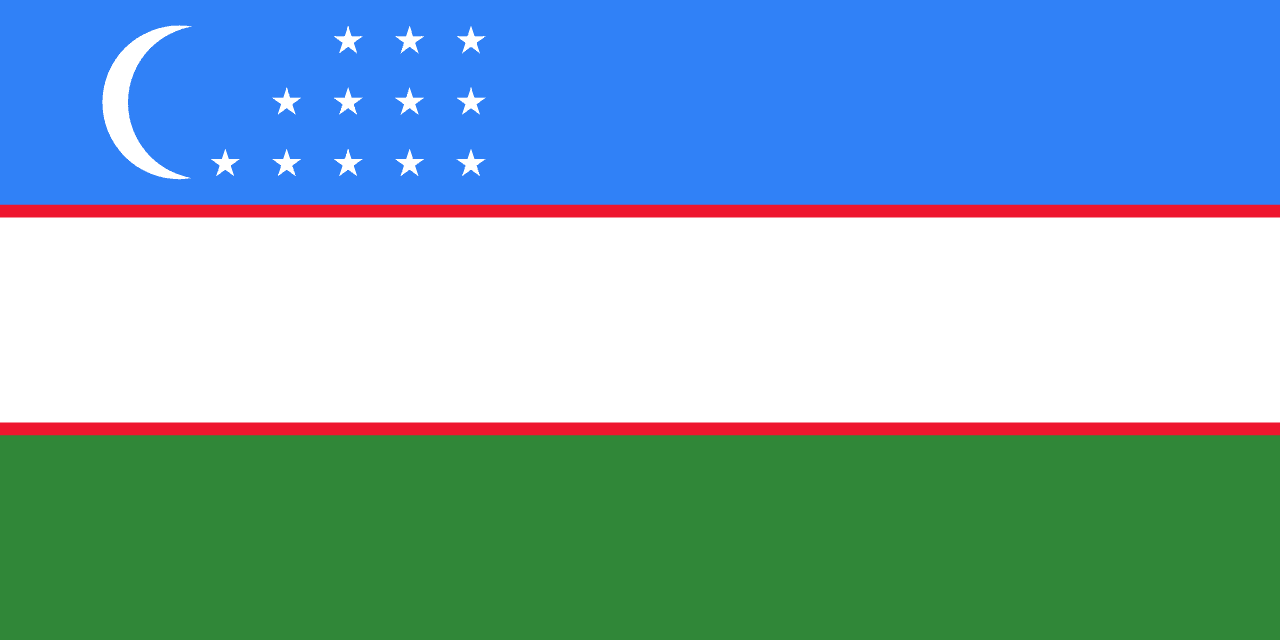
Uzbekistan
Asia
Three horizontal stripes of blue, white, and green separated by thin red stripes, with a white crescent moon and twelve white stars on the blue stripe, representing the sky and water, peace and purity, nature and fertility, the life force, the rebirth of Uzbekistan, and the twelve months of the year.
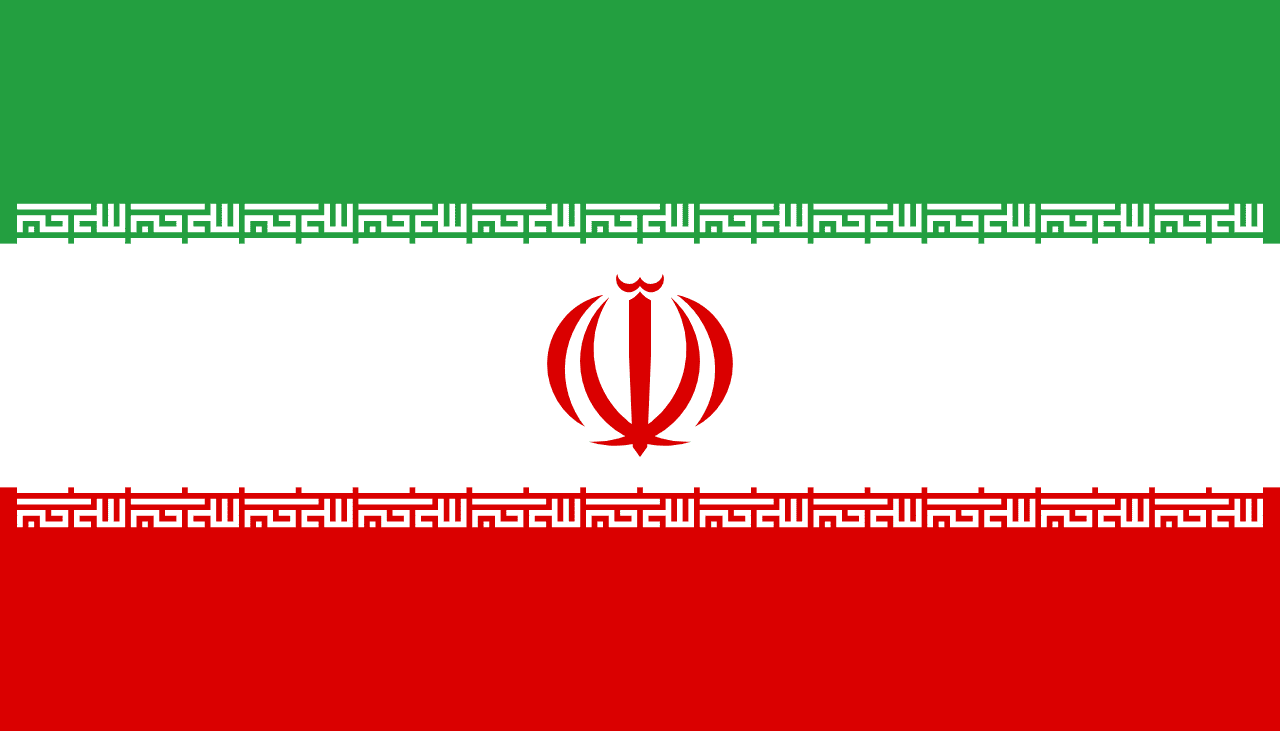
Iran
Asia
Three horizontal stripes of green, white, and red with a stylized emblem in the center and repeated 'Allahu Akbar' text along the borders, representing the Islamic Republic of Iran and the principles of the 1979 Islamic Revolution.

Afghanistan
Asia
Few nations have worn their history so visibly upon their flags as Afghanistan. In just over a century, the country has cycled through more banners than any other modern state, each design mirroring the upheavals of power, ideology, and identity that have defined its story. The current flag, a stark white field bearing the Shahada in bold black script, was restored by the Taliban in 2021. To outsiders, its simplicity may appear severe, even austere. Yet within its minimal form lie deep layers of meaning: an assertion of faith, a claim to authority, and a conscious rejection of the ornate tricolors and emblems that preceded it. To understand this flag is to glimpse not only Afghanistan’s turbulent politics, but also the powerful role of religion, symbolism, and history in shaping its national identity.
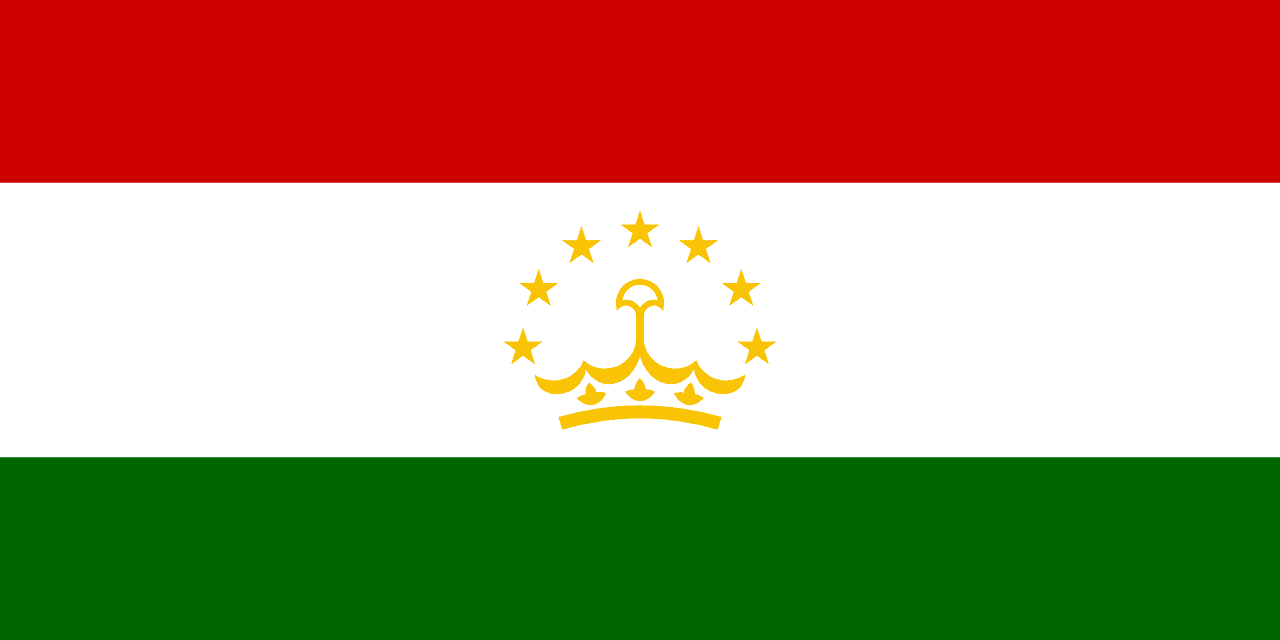
Tajikistan
Asia
Three horizontal stripes of red, white, and green with a golden crown topped by seven stars in the center of the white stripe, representing the unity of workers and peasants, cotton and snow-capped mountains, the verdant valleys, and the Somoni crown symbolizing Tajik sovereignty and the seven regions of historical Tajikistan.
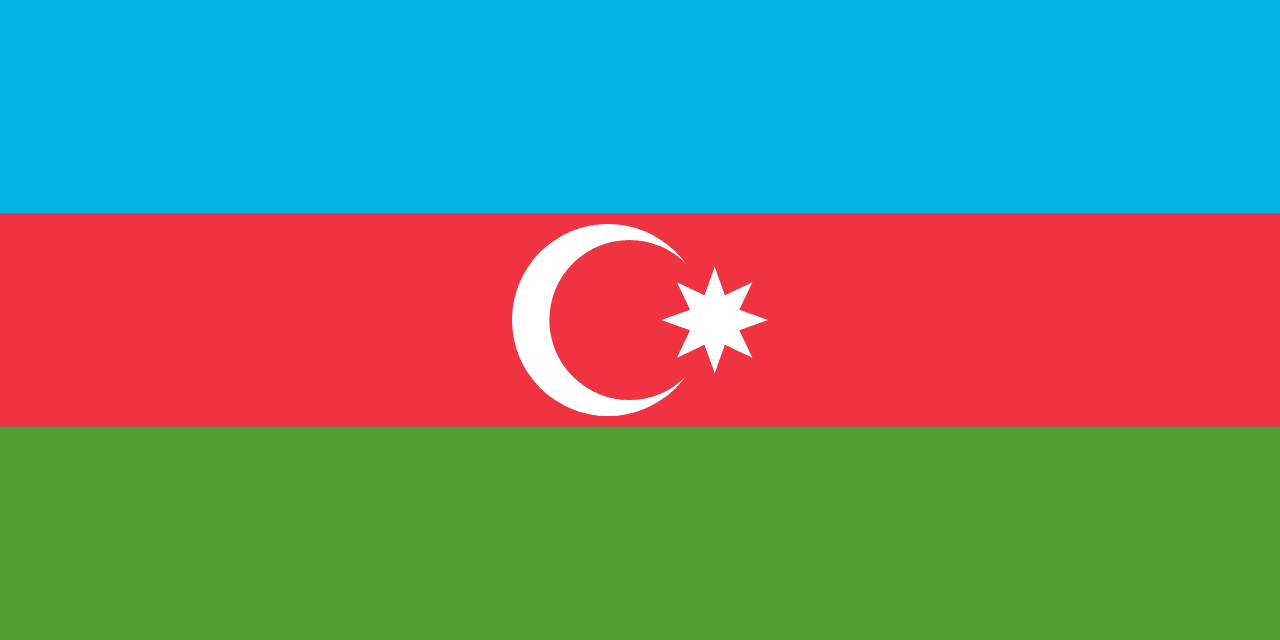
Azerbaijan
Asia
Three horizontal stripes of blue, red, and green with a white crescent and eight-pointed star in the center, representing Turkic heritage, modernity and progress, Islamic tradition, and the eight branches of the Turkic peoples, designed during the brief independence period of 1918-1920.
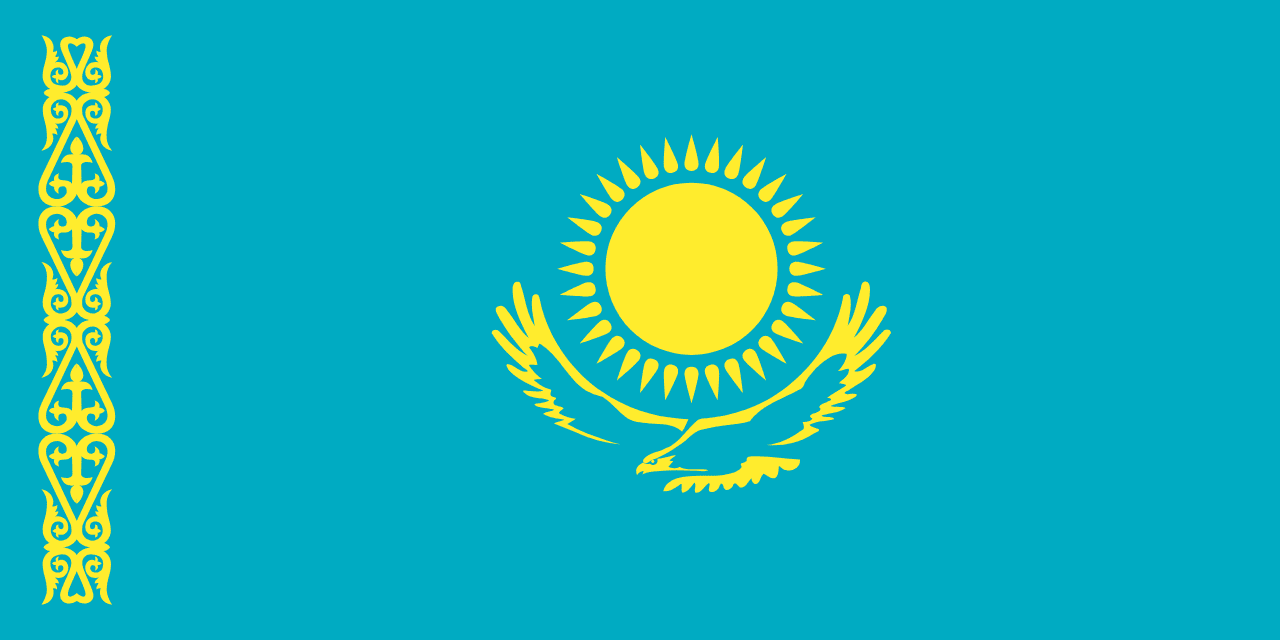
Kazakhstan
Asia
A turquoise field with a golden sun and soaring eagle in the center, and a traditional ornamental pattern on the hoist side, representing the eternal blue sky, freedom, and the rich nomadic heritage of the world's largest landlocked country.